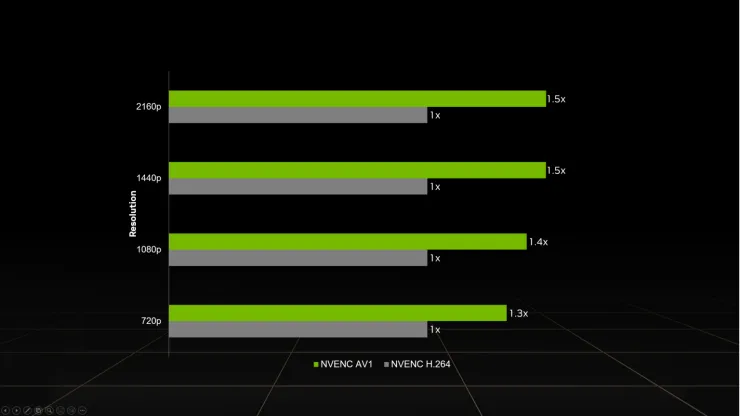AV1 is the first high-efficiency video codec format with a royalty-free license
In an era where digital content has largely shifted towards on-demand streaming, it’s almost archaic to recall the days when viewers were bound to the rigid schedules of network television and cable. Miss a broadcast? Well, you had no recourse. However, the modern age of streaming presents its challenges, primarily in the realm of data efficiency.
For those of us who’ve grown up with immediate access to content, the idea of waiting for a scheduled broadcast might be alien. Today, platforms from Netflix to individual YouTube creators can broadcast their content worldwide. But the effective transcoding of these streams, ensuring optimum quality without unnecessary consumption of bandwidth or resources, remained an evolutionary milestone. Enter AV1 encoding.
In November 2021, Netflix took the pioneering step of introducing AV1 streams for TVs, following its mobile launch. Moreover, the democratization of this technology is evident as OBS (Open Broadcaster Software) offers AV1 capabilities to YouTube creators.
Understanding AV1’s Significance
AV1’s architecture is tailored for web-based video transmission. A 2018 evaluation by Facebook showcased AV1’s superiority over predecessors, with data compression rates outstripping H.264 High and Main profiles by 46.2% and 50.3%, respectively. This improvement doesn’t just represent a technical leap; it equates to better video quality and reduced bandwidth expenses.
To contextualize this, Luke Lafreniere from the WAN Show inferred that AV1’s primary advantage is to deliver consistent quality with significantly reduced bandwidth. Linus Sebastian added, underscoring the broader impact, that excessive internet data impedes everyone, likening it to a congestion in the internet’s arteries. Still, Sebastian highlighted a caveat: the contemporary nature of this technology might initially entail increased decoding and encoding power consumption. Nevertheless, as AV1 gains traction, hardware solutions will likely be developed to offset these challenges, as observed with Apple’s M series SOCs.
Implications for Filmmakers
This technological evolution isn’t solely a matter of concern for streaming giants or YouTubers. Filmmakers, especially those harnessing video walls or volumes, will find this beneficial. Companies like Matrox Video have launched cards supporting AV1 transcoding, and Nvidia is following suit.

In contexts like LED walls or volumes where footage is real-time streamed, AV1’s efficiency translates to enhanced quality and savings. The ripple effects of this development are likely to empower even budget creators with superior tools in the future.
Is H.264 Becoming Obsolete?
The reign of H.264 in video has been long-standing, but its throne has been challenged repeatedly, mainly due to licensing constraints. AV1’s open-source nature might potentially overcome such barriers. However, the actual cost implications, based on licensing interpretations, remain to be seen.
So, what’s the verdict on the future? Can AV1 truly dethrone H.264?






